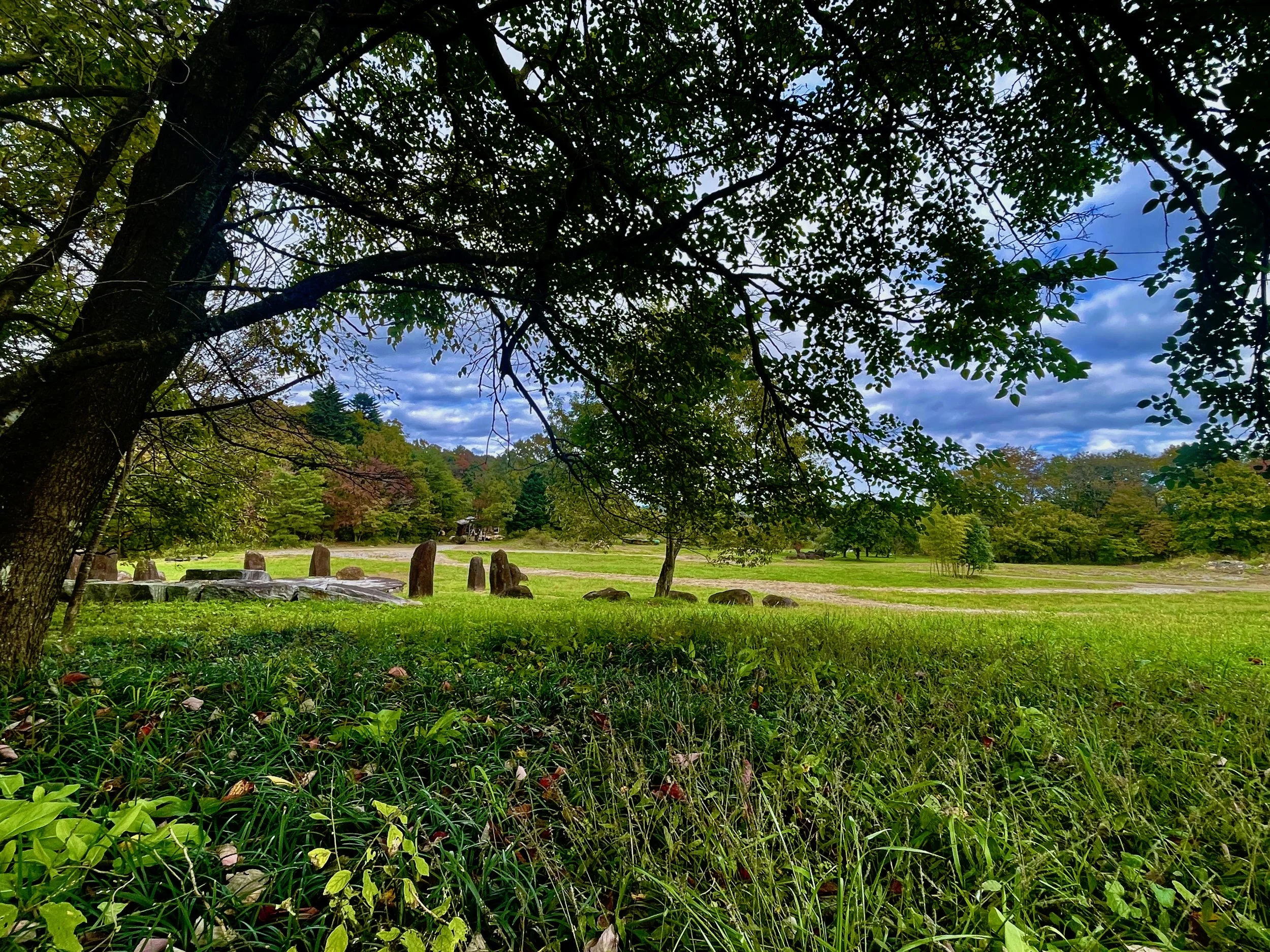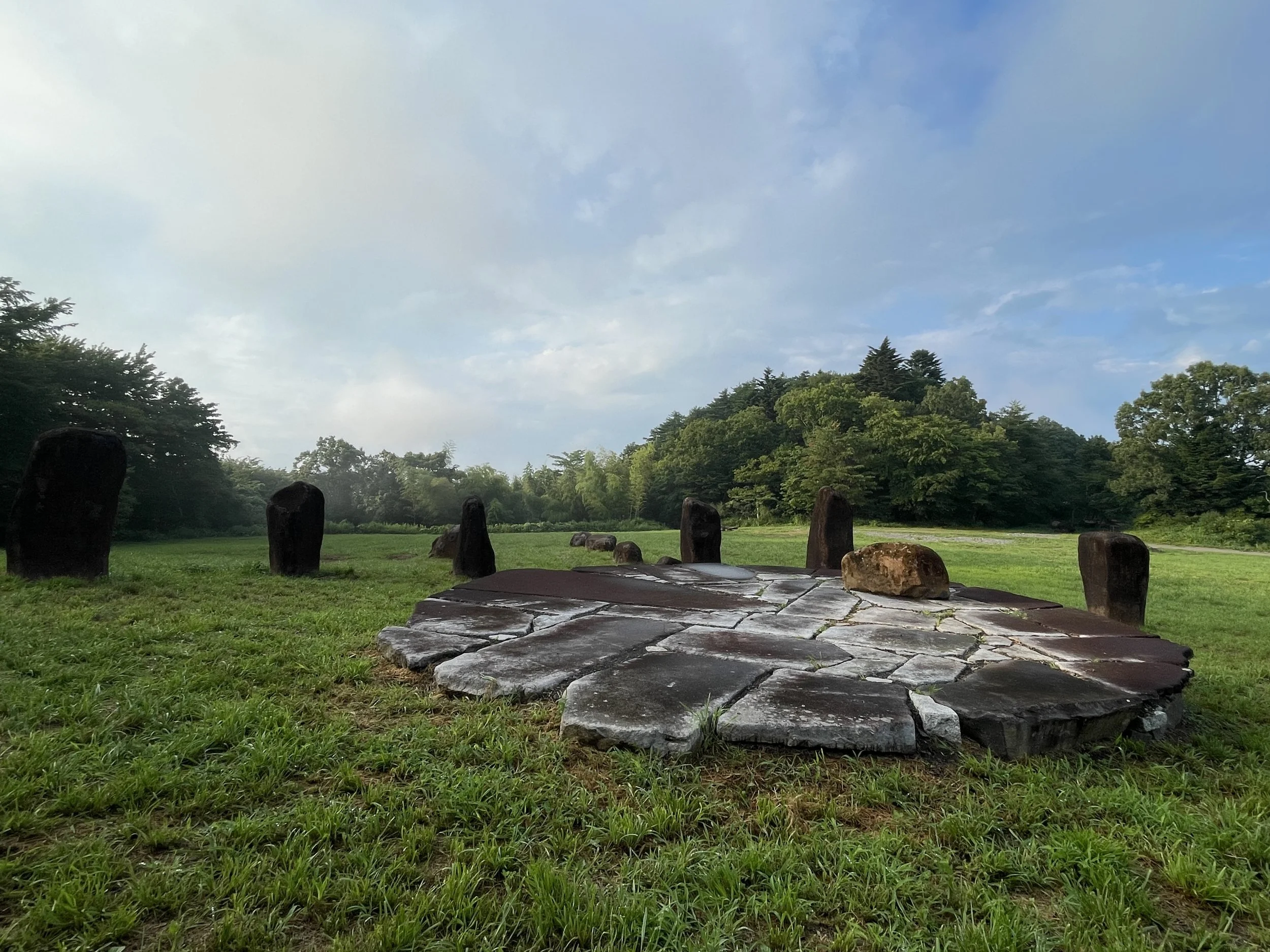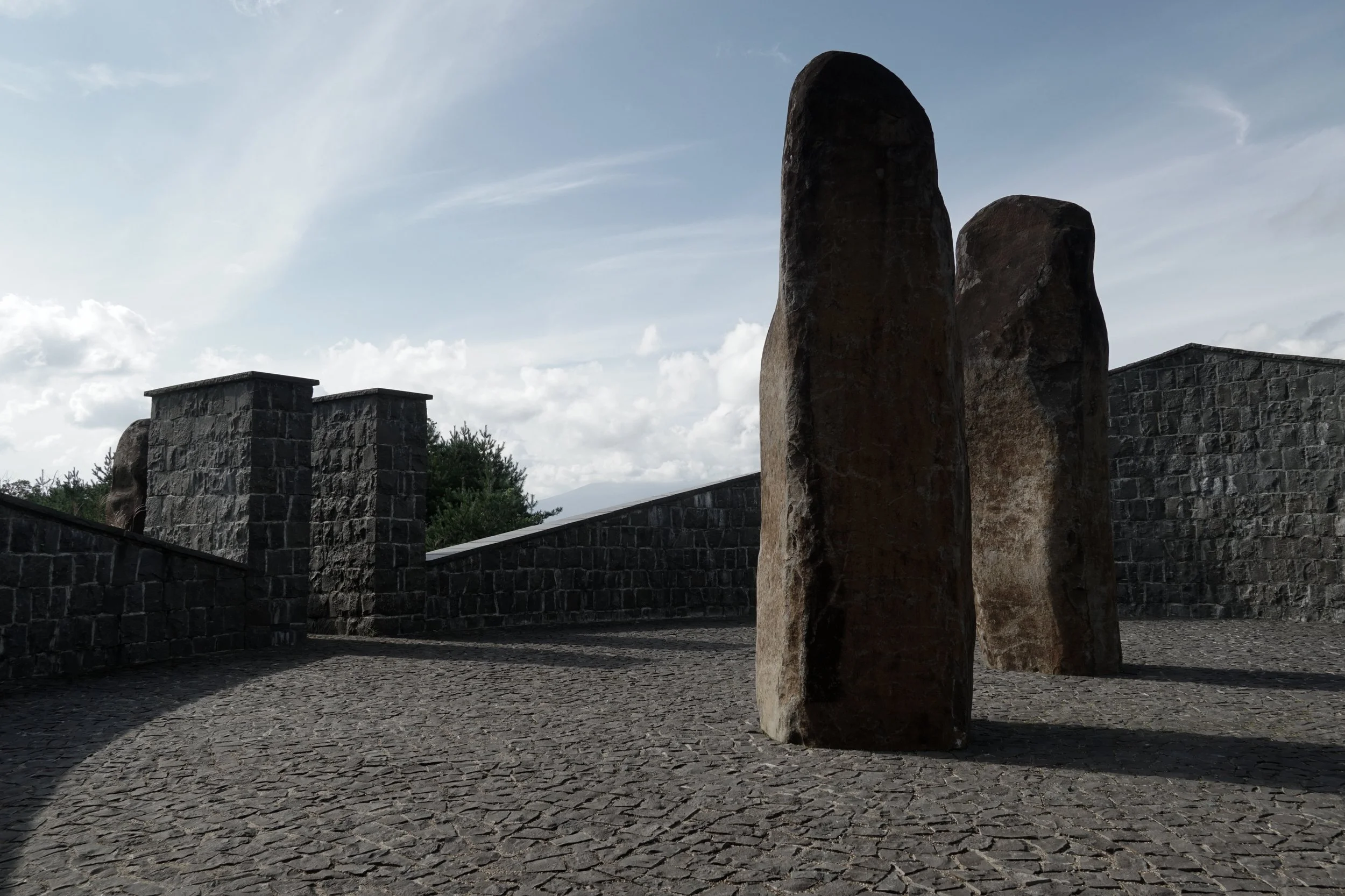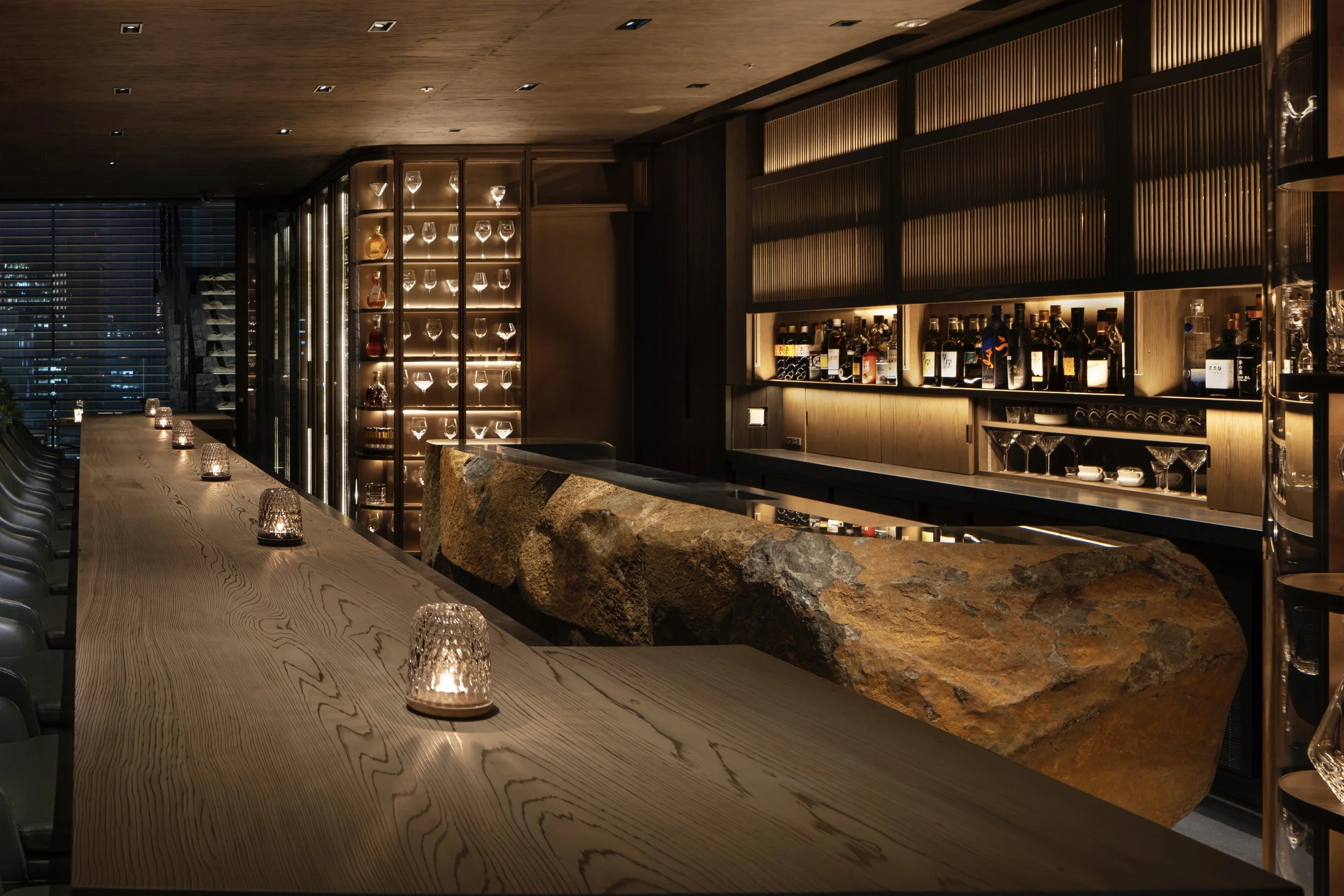Meet the Maker: Takasuke Yamada, CEO, Okurayama Studio
Takasuke Yamada is the CEO of Okurayama Studio, a stonemasonry company located on Mount Okurayama in northeast Japan. The studio mines the area around the mountain for Daté Kan stone, which formed 20 million years ago following a nearby volcanic explosion. Daté Kan is a distinctive and highly durable stone with an attractive black core.
Renowned for its sustainable methods and commitment to both the natural world and local culture, the fifth-generation family business crafts stone furniture and structures for hotels, restaurants and homes. As we look forward to collaborating with the studio on an exciting new project, we spoke to Takasuke about his work to continue his father’s legacy of craft, culture and community.
1. Can you tell us a little about your background and how you came to lead Okurayama Studio?
I was born in Tokyo and grew up as the fifth-generation successor of Okurayama Studio. Our company was founded in 1887 and has been involved in the quarrying and processing of Daté Kan stone (Datekanmuri stone) from Mt. Okurayama in the Miyagi Prefecture. This legacy has been passed down through my family. Until my grandfather's time, the focus was on expanding the business, and it grew to employ more than 200 people, including those in international trade. However, my father, the fourth-generation head, shifted the focus to restoring nature and culture. He worked to revive the land that had been damaged by quarrying, building cultural facilities and hosting events including music concerts and theatre performances. This created a new relationship between stone and culture.
The former quarry site.
Growing up, I was surrounded by musicians, sculptors, and artists who would often stay at our home and participate in cultural events at Okurayama. Our house was filled with architecture magazines and books about artists like Joan Miró, Isamu Noguchi, Henry Moore and so on. Naturally, I became fascinated by these works and spent my time reading them, drawing, and sketching architectural floor plans. After graduating from university in Tokyo, I went on to study graphic design at Central Saint Martins in London. Upon returning to Japan in 2008, I joined Okurayama Studio, and in the summer of 2017, I became the fifth-generation head of the company.
2. What makes Daté Kan stone special and how is it used?
The charm of Daté Kan stone lies in its expressive character, which resembles pottery and has an earthy texture reminiscent of the land, making it a stone that is already rich in expression without the need for additional processing. Furthermore, when the inside of the stone is polished, it reveals a unique colour with patterns and a deep grey hue, which gives it a distinct visual appeal.
The contrast between the polished part and the surface of the stone, along with the sculptural beauty inherent in the stone itself, are what I believe attract people involved in creative work. Currently, Daté Kan stone is being installed in various spaces, such as reception desks and bar counters in hotels and restaurants, as well as bathtubs, tables, and other features in private homes and villas. In each of these settings, Daté Kan stone enhances the space, making it more captivating.
3. What does a typical working day look like for you?
I love travelling. I enjoy staying in different places, tasting local cuisine, and meeting people with unique ideas. I travel not only within Japan but also overseas. The convenience of online meetings and apps means I’m fortunate enough to be able to work from anywhere.
When it comes to the design aspect of the stone, it’s important to have detailed discussions. Therefore, I often hold meetings in person at our headquarters, which means we can view the actual stones and discuss them in detail.
4. How important is sustainability at Okurayama Studio?
The outdoor theatre, Ishi-Butai.
Our company has been championing sustainability since the late 1970s. While overseeing the quarrying at Mt. Okurayama, my father also focused on restoring greenery to the mountain, working for the benefit of both the business and the landscape. By the 1980s, Mt. Okurayama had become a kind of artist residency, where various sculptors and musicians gathered. During this period, large stones produced from the mountain were viewed as gifts from the land and were used to build a stone stage outdoor theatre called Ishi-Butai, an indoor music salon called Yamado, and a library.
Gendai Iwakura
In 2017, a facility called Gendai Iwakura, which consists of two giant stones, was completed as a place for dialogue with the large stones. For us, sustainability is not just about the reuse of materials; it is, at its core, about the dialogue between nature and people.
5. What are some key projects you have worked on recently and what is coming up?
We recently supplied the bar counter, dining tables, reception counter, and washbasins for a restaurant in Tokyo opened by Chef Kei Kobayashi—the first Japanese chef to earn three Michelin stars in France. Additionally, for the Hilton Kyoto, we provided key elements for the lobby floor, including an iconic tsukubai (stone water basin) and the reception counter.
Kei Kobayashi’s St Louis Bar in Tokyo
Our most significant ongoing project is a facility currently under construction in Dubai. On the 60th floor of this building, we are scheduled to deliver iconic, sculptural objects and landscape stones made from Daté Kan stone. We are also set to be involved in a private residential project in Dubai in the near future.
6. What is your proudest professional achievement?
One of our proudest professional achievements is our long-standing pursuit — since the 1970s — of harmonising nature, craftsmanship, and contemporary design. Among our more recent projects, one of the most memorable is the creation and delivery of two monumental stone works to a private residence in Italy. For this project, we were involved not only in the design of the pieces but also in proposing the core concept behind them. The scale of the work and the challenge of expressing creativity on an international stage made this project especially meaningful for us.
“Such work reflects not only our international recognition but, more importantly, our essential philosophy: nurturing a quiet dialogue between nature and people.”
That said, we value just as deeply the projects we have carried out over the past 50 years on our home mountain. These include Ishi-Butai and Gendai Iwakura — spaces where land, people, and art engage in a quiet yet profound dialogue. We believe that such work reflects not only our international recognition but, more importantly, our essential philosophy: nurturing a quiet dialogue between nature and people.
LA London works with exceptional brands and talent globally to fulfil client briefs. Learn more about our projects and partners in our Journal or contact us for more information on working with us.





